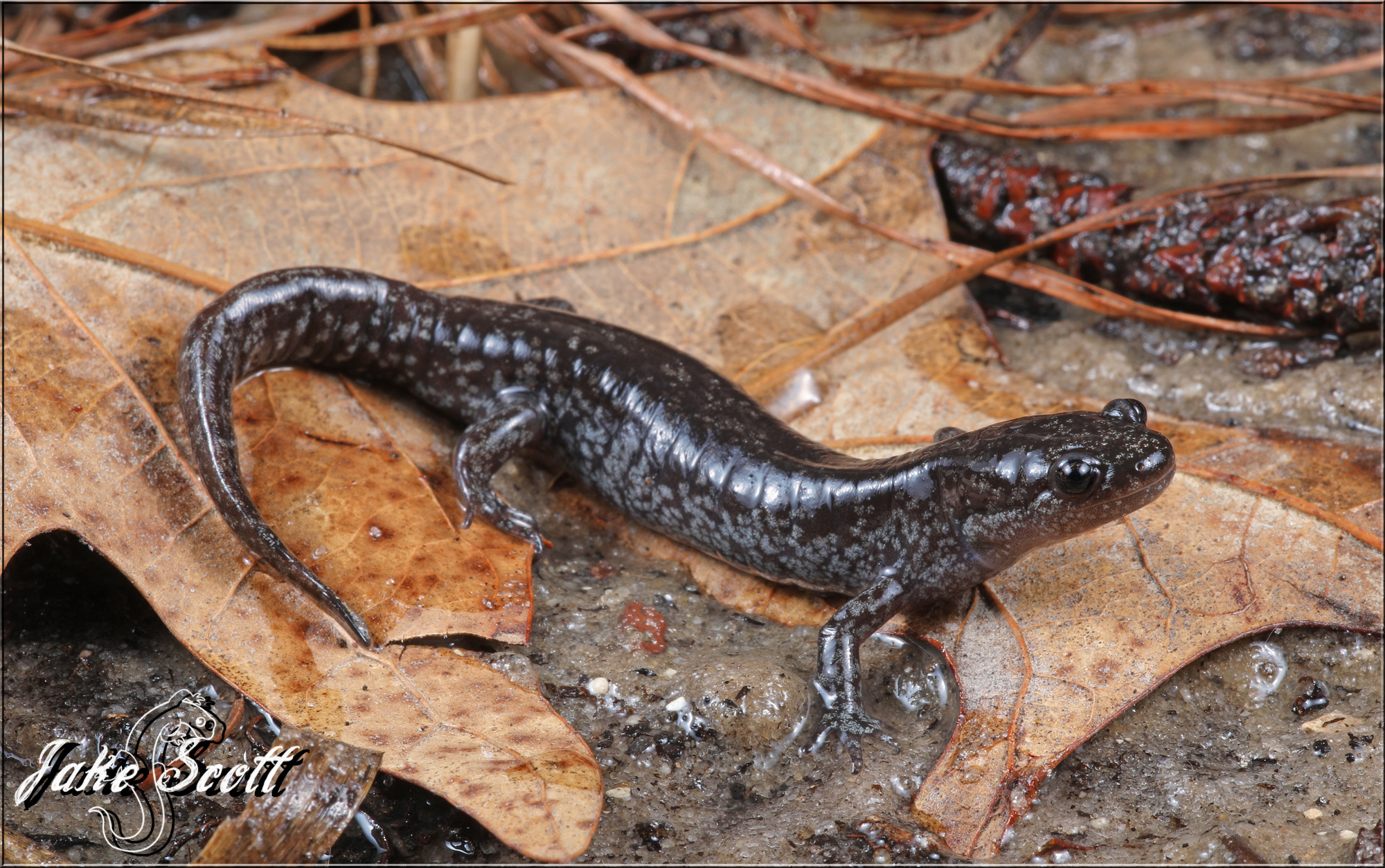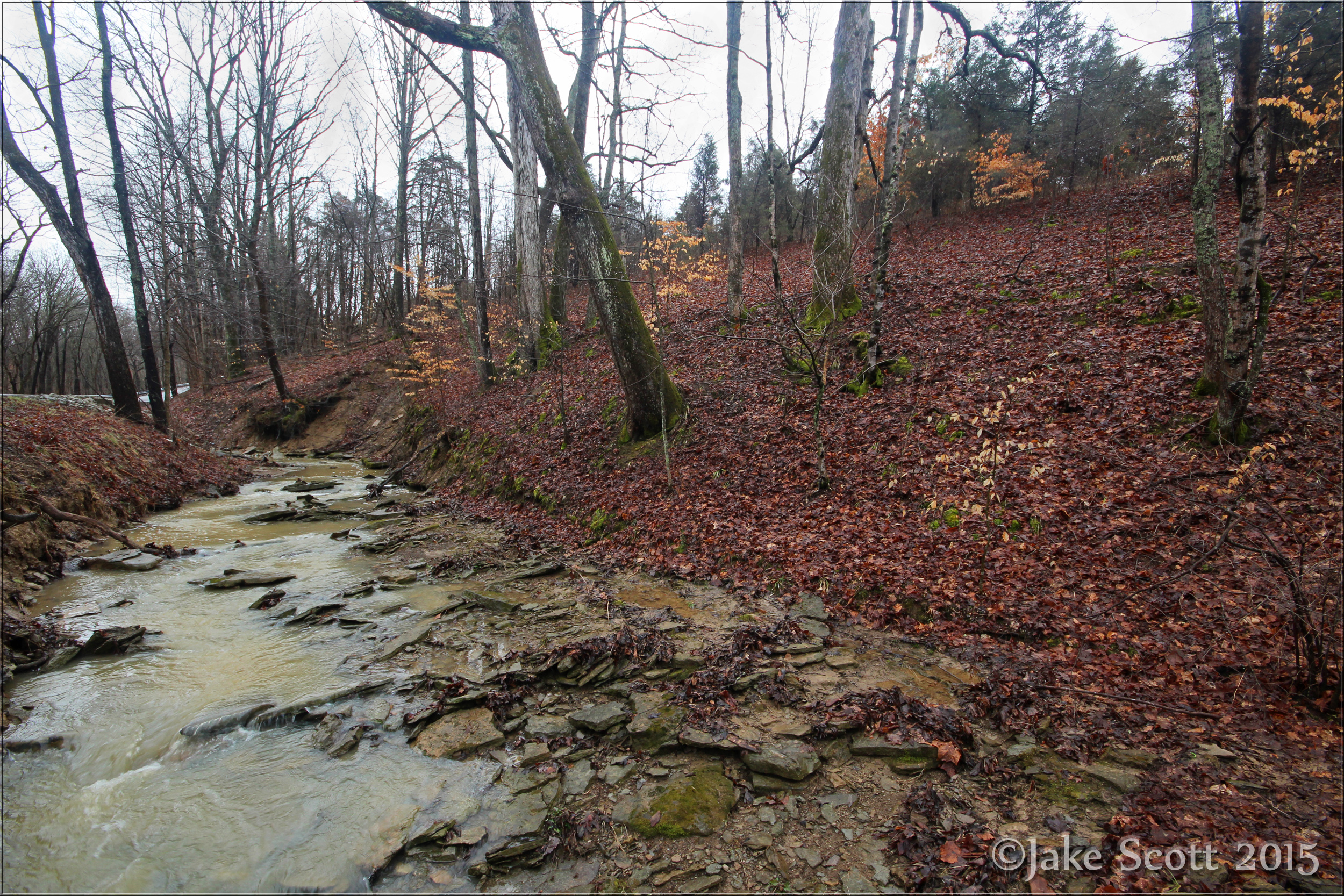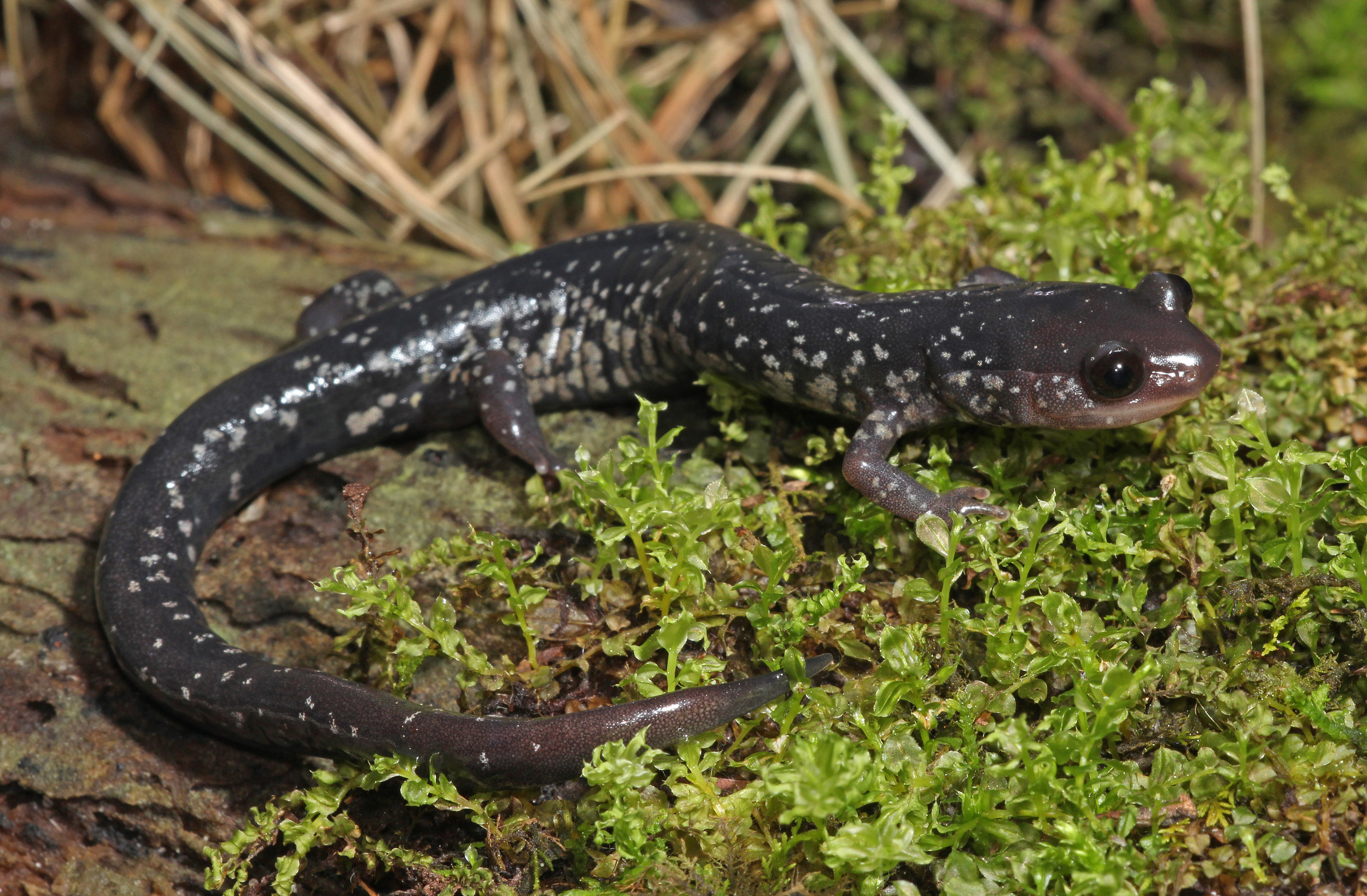As I sit here watching a television show that I'm sure is killing more brain cells than the 9.5% IPA beer I'm milking, I reminisce about this past year. Because you see, it's December 2017 and even though I live in Florida, my plans for additional herping is going to be nil. My days will be filled with shopping and then the holiday all of the shopping is for. So, I'm going to share with you all of my favorite species I found and photographed, and trips that I took, in order of appearance. It was a very busy year, so I'll try to keep the narrative low, but I'll do my best to make up for it with pictures.
The first interesting find of the year came in mid-January in the form of an amphibian via North Carolina. While it wasn't a lifer, I still enjoy finding Mabee's Salamanders (Ambystoma mabeei) every year. It was an eight hour drive from my front stoop to the log where this salamander was sheltering. I was racing a thick squall line up the coast and got there just ahead of the storm. It was a quick flip job, photographs, and I turn around for home. The way home was miserable; rain and sleet most of the way south. Had I had more time, I would have certainly looked for more amphibians making their way to ancestral breeding ponds in this winter rain.
Mabee's Salamander (Ambystoma mabeei)
Moving right along. Next I'll include another amphibian (it's early in the year, so that's the way things go). Every year I try to do some local herping. I know that sounds strange, but I'd say 70% of the herping I do is outside of the state of Florida. I think it's the grass is always greener syndrome. Anyway, my favorite area in the entire state of Florida to herp is the eastern panhandle; the Apalachicola region to be exact. The fauna in this area is surprisingly diverse. Though this next species is not unique to this region, it is more readily found there. A day mucking in the ravines and floodplains is a day well spent. Flipping logs in this habitat may reveal a One-toed Amphiuma (Amphiuma pholeter). An eel-like amphibian with internal gills and one small apendage that patrudes from each side of the neck.
One-toed Amphiuma (Amphiuma pholeter)
Next is a species that may be more common than most people think. They just happen to enjoy the subterranean lifestyle....just a bit shy. The Florida Worm Lizard (Rhineura floridana) is fossorial species that is endemic to the loose soils of North and Central Florida. Most of the time they are seen when heavy rains push them to the surface. Unfortunately, many die in standing water.
Florida Worm Lizard (Rhineura floridana)
Back to salamanders! This next animal was one I had seen many moons ago but I woke up one morning and realized my photos were pretty much useless and they needed updating. So I made the 8 hour drive to North Carolina just for updated pictures. Dipnetting leafpacks in a sluggish creek revealed several Dwarf Waterdogs (Necturus punctatus). The photo came out OK, but I just may need to update again in a year's time.
Dwarf Waterdog (Necturus punctatus)
In late March, Dick Bartlett and I embarked on the first big trip of the year. Unfortunately it was only big in distance and not in time spent at the location. I took a Friday off of work and we left Thursday afternoon for Western Arkansas/Eastern Oklahoma. By Friday afternoon we were finding salamanders and by Sunday morning we were heading home. We ended up with 13 species of salamander in that short period of time. Some of the highlights are below (I couldn't just pick one).
Caddo Mountain Salamander (Plethodon caddoensis)
Rich Mountain Salamander (Plethodon ouachitae)
Fourche Mountain Salamander (Plethodon fourchensis) - pronounced “Foosh”
Grotto salamander (Eurycea spelaea)
Ozark Zigzag Salamander (Plethodon angusticlavius)
Western Slender Glass Lizard (Ophisaurus attenuatus attenuatus)
Brownback Salamander (Eurycea aquatica)
Oklahoma Salamander (Eurycea tynerensis)
Ouachita Streambed Salamander (Eurycea subfluvicola)
Lizards are also a large part of my camera's diet. This particular species is not a Florida native, but I've invested well over 10 years watching this confined population. Hispaniolan Green Anoles (Anolis chlorocyanus) in Broward County have been thriving in a small area for about 20 years. They escaped, or were released, from a reptile dealer that specialized in Hispaniolan herpetofauna.
Hispaniolan Green Anole (Anolis chlorocyanus)
Costa Rica. Does that say enough? Well, if not, than I'll share a little something with you. I took my first trip to Costa Rica this past May with my wife and it was flat-out amazing! We traveled most of the northern part of the country and encountered countless birds, mammals and herps. But this isn't really about the story, as I'm sure I'll do a dedicated blog post at some point, so here are some of the cooler herps we encountered.
Red-eyed Treefrog (Agalychnis callidryas)
Eyelash Viper (Bothriechis schlegelii)
Green & Black Poison Frog (Dendrobates auratus)
Strawberry Poison Frog (Oophaga pumilio)
Central American Lyre Snake (Trimorphodon quadruplex)
Slender Hognosed Pitviper (Porthidium ophryomegas)
Central American Coral Snake (Micrurus nigrocinctus)
Tungara Frog (Engystomops [Physalaemus] pustulosus)
Sheep Frog (Hypopachus variolosus)
Tropical Banded Gecko (Coleonyx mitratus)
Painted Wood Turtle (Rhinoclemmys pulcherrima)
I get to the Appalachians at least three times a year (and often more). This next trip was in May to the southern Smokys, only a week after arriving home from Costa Rica. My wife and I did some hiking, a lot of eating and beer drinking and we flipped a couple of rocks and logs along the way.
Red-cheeked Salamander (Plethodon jordani)
Santeetlah Dusky Salamander (Desmognathus santeetlah)
I've already written a blog about my Kansas trip with Dick that we took in mid June, so there wont be much more than pictures. We were past the prime time for flipping snakes in large numbers, but that didn't stop us from going and finding snakes. It was fun, but to this day, I’m still exhausted from this trip.
Bullsnake (Pituophis catenifer sayi)
Western Massasauga (Sistrurus catenatus tergeminus)
Prairie Rattlesnake (Crotalus viridis)
Next up is the longest trip I've ever taken. Dick and I drove from North Florida to Chula Vista, California and back. We herped West Texas, New Mexico, Arizona and California in this 2 week journey and we cleaned-up on species.
Reticulated Gecko (Coleonyx reticulatus)
Trans-Pecos Ratsnake - blonde phase (Bogertophis subocularis)
Twin-spotted Rattlesnake (Crotalus pricei)
Arizona Mountain Kingsnake (Lampropeltis p. pyromelana)
Sacramento Mountains Salamander (Aneides hardii)
Bleached Earless Lizard (Holbrookia maculata ruthveni)
Desert Iguana (Dipsosaurus dorsalis)
Sonoran Sidewinder (Crotalus cerastes cercobombus)
Arizona Black Rattlesnake (Crotalus cerberus)
Baja Black-collared Lizard (Crotaphytus vestigium)
Spotted Leaf-nosed Snake (Phyllorhynchus decurtatus)
Colorado Desert Fringe-toed Lizard (Uma notata)
A quick weekend trip to meet up with many-o-friend at Snake Road in Southern Illinois led to a few herp finds. No lifers were obtained, but it was just good to see folks and make several fires.
Western Cottonmouth (Agkistrodon piscivorus leucostoma)
Yellow-bellied Watersnake (Nerodia erythrogaster flavigaster)
I'll end with two salamanders from two separate trips. The first was a quick run up to Tennessee with my wife to peep the fall colors, see some waterfalls, and of course herp. I turned up a few species of salamander, but the pictured animal below was the pièce de résistance.
Junaluska Salamander (Eurycea junaluska)
The next trip was taken to Alabama and it was especially significant to me. I drove up to meet my friend Chris Montross for a little bit of mucking around in the swamps. The goal was to find my 8th and final subspecies of Pseudotriton. Disapointed I was not! We turned one up in very short order.
Gulf Coast Mud Salamander (Pseudotriton montanus flavissimus)
It's fun to look back at all of the time and money you burned through in a year's time. There's a song my step Dad used to sing to me, and while I can't remember all of the lyrics, I remember an important line that always plays in my head and I hope it holds true when I'm old:
How do I know my youth is all spent?
My get-up-and-go has got up and went!
But, in spite of it all, I’m able to grin
And think of the places my getup has been!






















![Tungara Frog (Engystomops [Physalaemus] pustulosus)](https://images.squarespace-cdn.com/content/v1/57d9e9f3d1758e667ed2012e/1513019901173-EM626KST93ZTXGQ6GSD3/Tungara+Frog+%28Engystomops+%5BPhysalaemus%5D+pustulosus%29.jpg)



























![Plains Leopard Frog (Rana [Lithobates] blairi)](https://images.squarespace-cdn.com/content/v1/57d9e9f3d1758e667ed2012e/1499223974804-CW1E2F3Z9DOBTU5894P0/image-asset.jpeg)






































































































